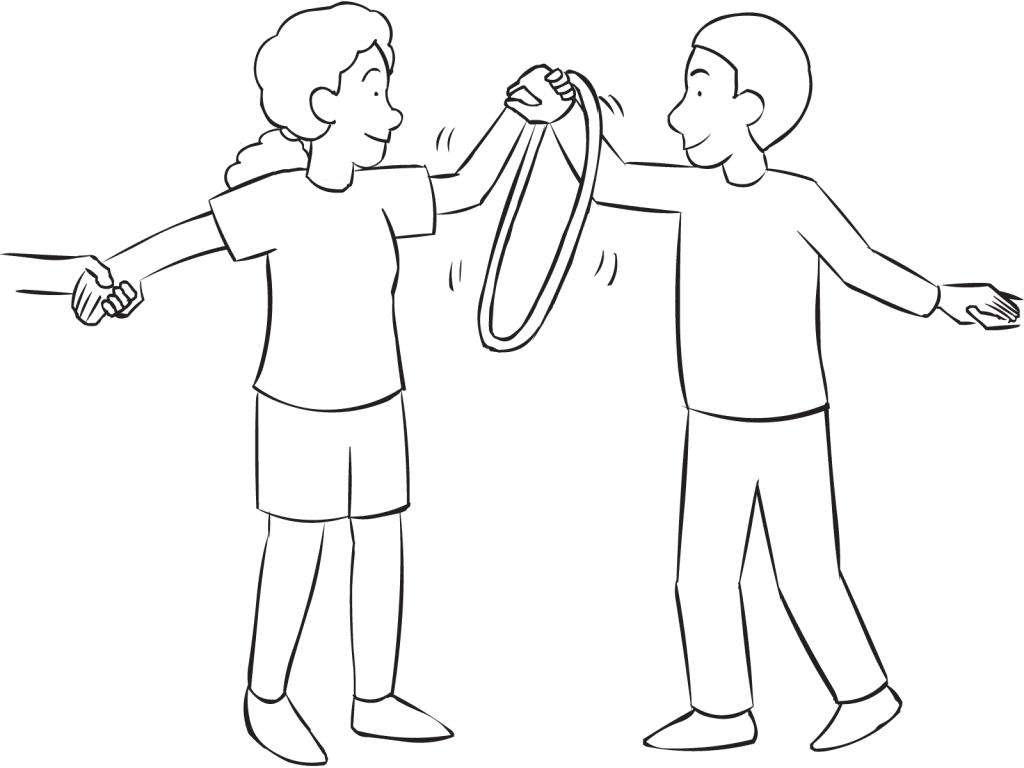Save to Playlist
Step-by-Step Instructions
Resources Premium
Video Tutorial Premium
How To Play Narrative Premium
Practical Leadership Tips Premium
Social-Emotional Learning Premium
Health & Wellness Programming Premium
Popular Variations Premium
You Might Also Like... Premium
Useful Framing Ideas Premium
Reflection Tips & Strategies Premium
Program Templates Premium
Source Premium

No Props No Problem
Brand NEW book featuring 150+ outrageously fun group games & activities. Scan QR codes to connect to tons of digital content including video tutorials.
Add to Cart
NEW – No Props No Problem
The best-selling book featuring 150+ outrageously fun group games & activities. Scan QR codes to access exclusive digital content including video tutorials.

Free Ice-Breakers & Group Games
Ten of the best no-prop, interactive ‘get-to-know-you’ games & activities. 100% fun, your group will love ’em. Our most successful giveaway, 10,000+ downloads so far…
Top Ten Icebreakers & Group Games
Download our free 28-page ebook jam-packed with outrageously fun activity ideas.
Just one more question:
I am interested in…
Choose a plan that’s right for you
We offer a range of membership plans with no surprises.
Click an option below & discover our simple pricing.

Individual
Click here if you’re a:
- Teacher
- Corporate trainer
- Outdoor educator
- Camp leader
- Youth leader
- Conference organiser
- Therapist/counsellor
Membership Plans

Enterprise
Click here if you represent a:
- School
- Corporation
- Community-based Organisation
Explore plans for
10, 50, 200 or more
potential users
Membership Plans






Love the reflection questions in the Health and Wellness Programming section. Thanks Mark!
I love this game. I did it many times. Easy to explain and good for exercise, thanks Mark
I love using this activity, especially with larger groups. One of my favorite little additions is a dish of water that needs to go one direction around the circle without spilling. The hoops should stay in motion at all times, two hoops will travel in opposite directions around the circle, there should be no breaks in connection, and you will know you can stop passing the hoops when the water dish has made it to the final person without any water drops.
I began using this variation while training summer staff for psychosocial group programs. one of the challenges we were facing in group at the time was that staff was getting caught up in some of the larger, more fun events throughout the summer, and much of the important stuff that needed more focus was being neglected. This brought out some really fascinating points not only about focusing on our kids and the therapeutic milieu, but also caring for and supporting our peers who are more focused in on the kids in each moment.
Great little activity and so versatile too.
Have used it as a team building exercise for one group as they try the challenge in one direction and timing it to see their improvement and techniques.. then tried with switching the directions.. Have even done two hoops going in opposite directions and seeing how that works.
Have used it with large groups of well as a competitive fun challenge. Group of 45 or 60. Divide in groups of approximately 15 and run it as a competition between groups. Can get loud and lots of fun so can become a bit tricky to get the attention of the group. Lot of fun especially if groups are especially competitive 🙂